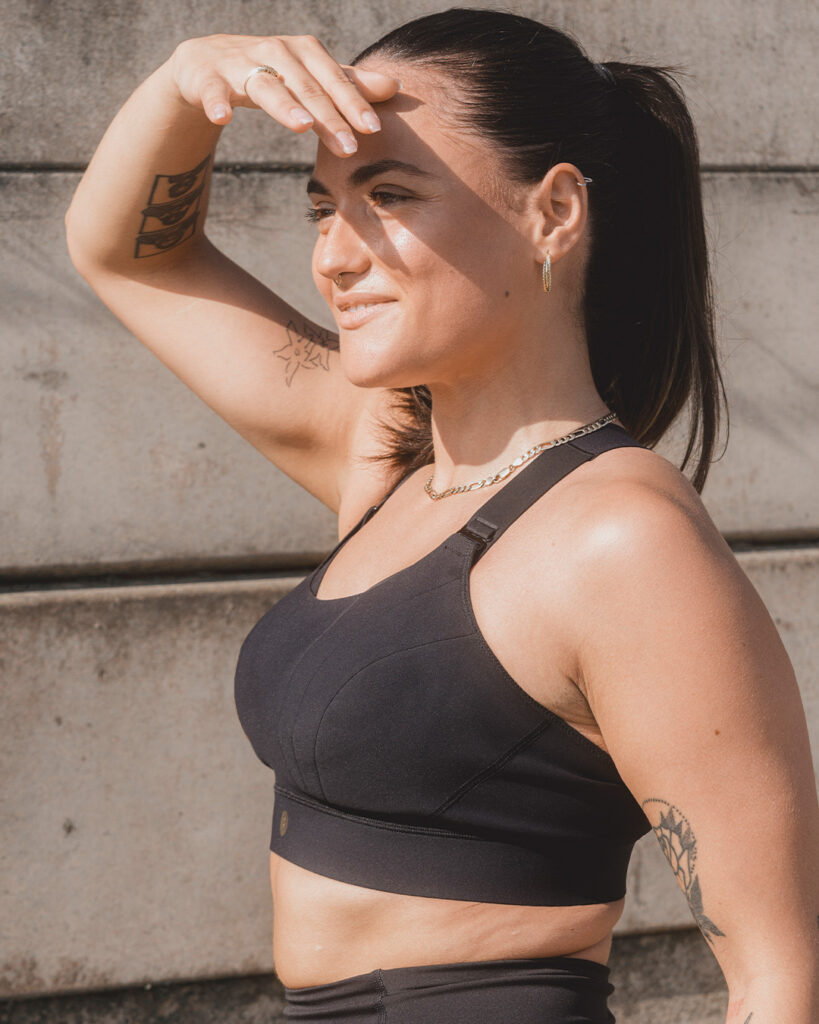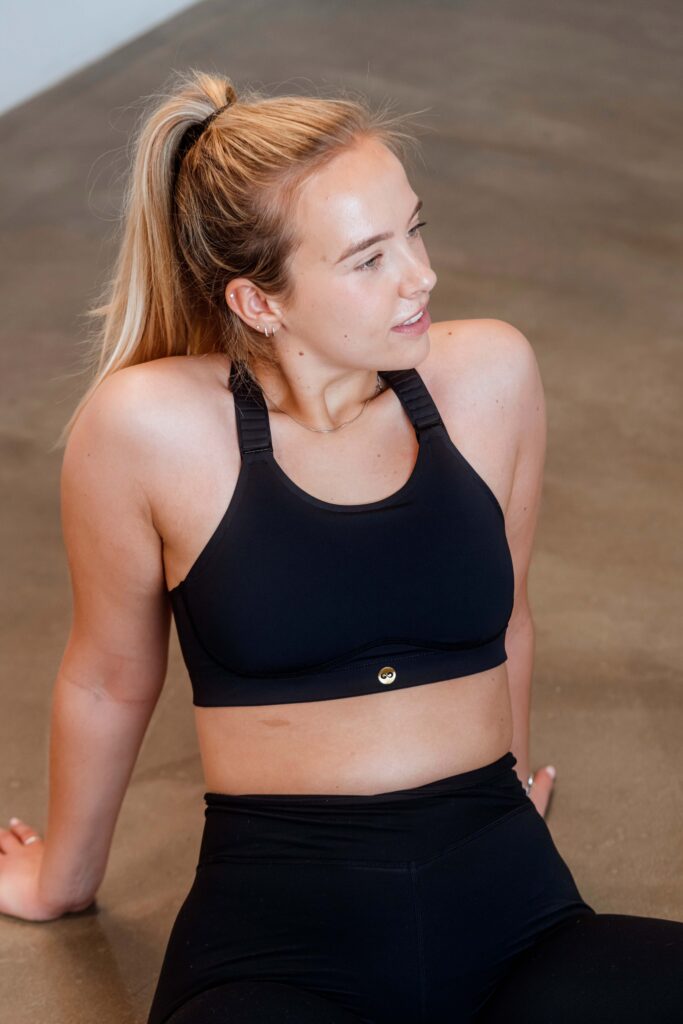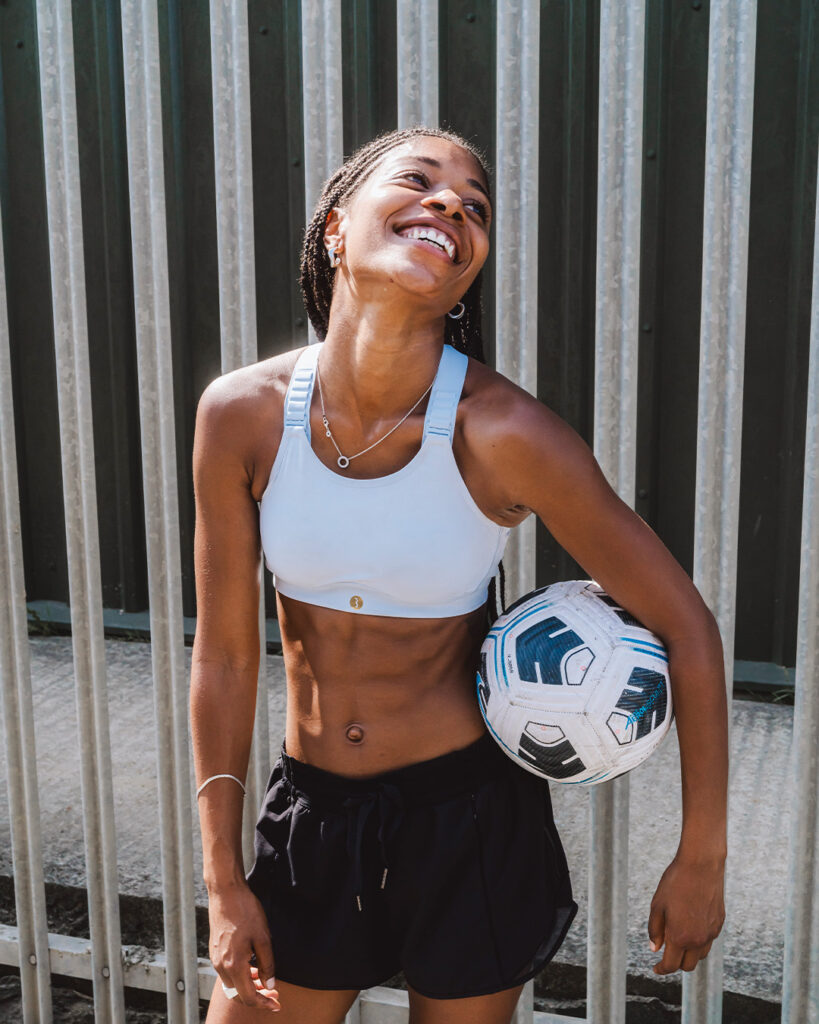Design, like other areas of sport, has sometimes had women as an afterthought. Now, a new generation of innovators are working to change that.
“We had an email that was entitled, ‘you’ve ruined my life’. And I thought, ‘oh no!’” laughs Charlotte Gill.
It was feedback from a customer on a sports bra from PEBE (pronounced P-B, like the acronym for personal best), the company Gill co-founded with Lucy Horsell. Not a promising start, but the customer quickly elaborated. She had worked in the Royal Navy for ten years, and told Gill: “‘I’ve had to throw all of my bras out because I was wearing totally the wrong size, but your Gravity Sports Bra has changed my life. My chronic back pain that I’ve suffered with for five years has evaporated, and my times have improved and I have done no extra training.’
“So to see an elite woman who has physical activity as part of her daily job give us that kind of feedback on a sports bra, it’s a fairly life-defining moment.”
That radical change was brought about thanks to PEBE’s approach to design: made by women, for women, listening to what they need.
In a BBC survey of elite British sportswomen, two-thirds said most of the equipment they used was not specifically designed for a woman. It’s surprising that even a sports bra, a bit of kit designed for a female body, might seem not to take their needs into account – but Gill explains that she felt it wasn’t a priority for mainstream brands.
“The sports bra is really left off the kit list.”
“We really want to bring it back, both at school and into the retail market, as an essential piece of kit. As a woman, your sports bra is just as important as your trainers.”
Experts say improper support can cause discomfort, pain, and damage to breasts during exercise. Elite athletes like netball player Ellie Caldwell and footballer Millie Bright have both spoken about painful playing experiences due to ill-fitting bras. Gill reflects on how she struggled to find options in the market that successfully married fashion with performance.
“Women and girls care – we care about how they do the job, what they look like, how they make us feel. So it’s actually an incredibly important piece of kit that we were just incredibly passionate about changing.”
Problems with existing brands included a lack of adjustability and not accounting for breast biomechanics – the way breasts move in a figure-of-eight shape as you run. Gill describes how their head of product was ready to “rip up the rulebook of bra-making”, ending up with their patented WRAPA technology, a contoured layer that accounts for that figure of eight movement.
It’s not just a marketing gimmick. The University of Portsmouth ranked PEBE’s Gravity Sports Bra number one in movement control, ahead of 435 other sports bras including those from massive brands.
The company works with elite sports organisations – including the FA, England Netball, and England Lacrosse – to teach them about proper sports bra fitting.
Reflecting on their success, Gill says: “I think we are a product created by women for women, and we really went off what we wanted.”
They are not the only brand to have started from a conversation and grown into a movement. On a trek up Mt. Kilimanjaro in 2017 to play the highest-altitude football match ever, Laura Youngson discovered that other women were suffering pain due to from ill-fitting boots. That sparked the creation of IDA Sports, who create football boots specifically designed for women.
“We mostly focus on fit and comfort for our female athletes so that we can allow them to perform better and also alleviate risk of injury,” says Emelia Funnell, the company’s Product Research and Development Lead.

XDB Photography

XDB Photography

XDB Photography

XDB Photography

XDB Photography
Before Ida, most football boots on the market for women were ‘unisex’ – but, as Miss Funnel explains, these are generally developed from a ‘last’ (a shoemaking mould) resembling a male foot – and, more specifically, a Caucasian male foot. Women’s feet tend to be more triangular, have higher arches, and carry body weight differently; Ida’s boot shape and stud configuration are designed accordingly.
“If they’re more comfortable, they’ll be more confident in their movements. They’ll be able to play a full 90 minutes without thinking about their feet the whole time and that’s what we exist to do.”
The idea of creating boots just for women appears radical to some. “A lot of men will ask us, ‘When are you going to make men’s?’” Funnell says, “And we’re like, you have men’s everywhere else!
“We’ll get around to you but we’re going to use the opposite approach of driving our design with a female first approach.”
Similarly, Gill describes PEBE’s products as created “by women, for women”, and calls their female-led ethos “fundamental”.
“For us, a PB is personal to you. It’s not about the fastest marathon time. It might be that your PB was that match that you came back from severe injury or a miscarriage.
“That personal experience of being a woman, fully understanding the process of what our customers and all the wearers of our sports bras will need – we know we can fully give that to them.”
“There’s a lot of great male allies – but if there was a product needed for controlling men’s balls as they were running around, I would not be the best person to design that because I couldn’t fully understand what was needed!
“There is an element of fully understanding and relating and empathising so you can create the best product possible.”
There’s also a social element to these design innovations, as Funnell points out.
“It’s also about inclusion of women in sports. To be able to go into a sports store and go to a wall that says women’s football boots is completely different.
“That’s kind of the social side as well – by providing kit that’s suitable for female athletes, that’s also growing the sport.”
PEBE’s work is not just selling sports bras, but also changing attitudes. They run workshops in schools to educate pupils about the importance of proper bra fitting and the performance impact of wearing a proper sports bra.
“This is about changing it for a generation of women,” Gill says.
“Everything we do is with the goal of a woman feeling at her best to go out and train, because we have enough bloody barriers in the way as it is.”



